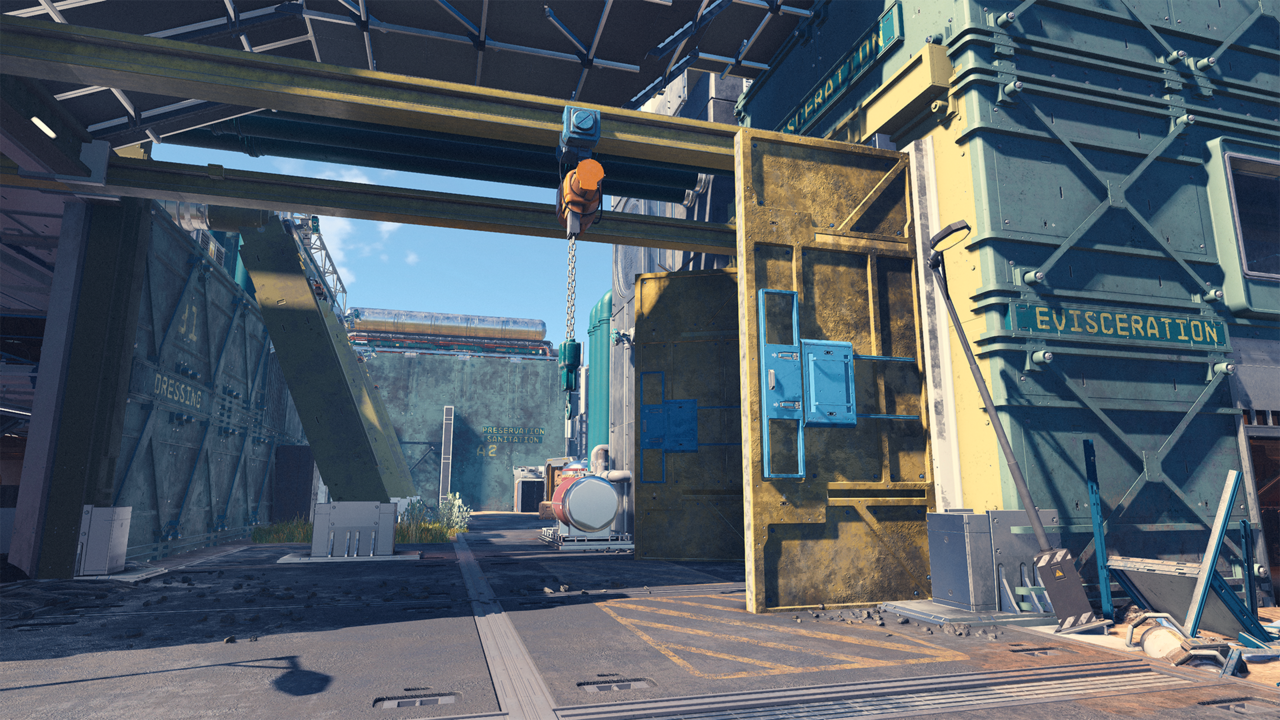Exploring Critiques in Open-World Games Storytelling
During childhood, enjoying the outdoors on a summer evening until dusk approaches creates a sense of reluctance when a parent calls you back inside. Similarly, immersing oneself in open-world games like Cyberpunk 2077, Fallout, and Elder Scrolls can evoke a similar feeling of attachment to the virtual playground, with game developers acting as the guiding figures.
Open-world games typically present players with a campaign or story mode that introduces them to the game’s core features. While these narratives often lead to significant character development and world changes, they can also pose a dilemma. Many players prefer game worlds that retain a sense of endless exploration and possibilities, offering continuous excitement and new experiences. The introduction of changes, especially during crucial moments like the game’s conclusion, can disrupt this desired continuity, impacting the overall gaming experience from the very beginning.
What Makes Players Enthusiastic About These Games?

Exploring the Depth of Open-World Games Storytelling Critique
Many players do not solely focus on the main story quests within open-world games. The allure lies in the immersive experience these games offer. They provide a virtual realm that is both thrilling and safe, allowing players to delve into uncharted territories and accomplish various objectives.
Immersive open-world games serve a dual purpose: they present a captivating environment for exploration and offer a plethora of tasks to complete. Players seek to lose themselves in these virtual worlds, engaging with non-playable characters, uncovering hidden treasures, and fulfilling every quest. Unlike real-life scenarios where acknowledgments for completing tasks are minimal, games provide tangible rewards such as quest log updates, unique items, and satisfying acknowledgments upon quest completion.
However, when these games reach a definitive conclusion, whether through the character’s demise or other means, it serves as a stark reminder that the meticulously crafted world, be it Night City, Whiterun, or Megaton, is merely a facade. It ceases to be a living, breathing world and transforms into a static setting designed to guide players through a predetermined narrative. The impact of players’ decisions on the game world becomes obscured once the storyline wraps up.
For many enthusiasts, open-world games also function as hoarding simulators, where the desire to collect every available item becomes a driving force. The satisfaction of acquiring and cataloging each item, despite the challenges it poses to game developers in terms of system design and stability, adds to the player’s sense of accomplishment and progression.
While character skills and levels reflect the player’s journey within the game, the amassed collection of items serves as a tangible testament to their experiences. Although players may not form emotional attachments to in-game possessions as they would in other titles like Destiny, a diverse arsenal of weapons symbolizes the player’s dedication and perseverance throughout the extensive gameplay. This style of gameplay may not resonate with all players, but for those who relish the intricacies of open-world games, it holds significant value.
The adventure in open-world games is never-ending

Open-world games storytelling critique
Starfield, a recent addition to the open-world games genre, sheds light on the divergence between narrative requirements and player preferences at the beginning and end of its main storyline. In the initial stages of the game, players express a desire for a continuous gaming experience. Early in Starfield, players embark on a mining mission on a distant planet after a transformative encounter with a mysterious rock. As the main quest unfolds, players are introduced to a new realm of existence known as the Starborn, prompting speculation about their origins and nature.
As the story progresses, players acquire new abilities such as time manipulation, gravity alteration, and energy projection, enhancing their gameplay experience. The conclusion of Starfield offers a unique and unconventional ending that diverges from traditional gaming conclusions, leaving some players unsatisfied. Without delving into specific details to avoid spoilers, the ending allows players to make significant world-altering decisions and witness the consequences of their choices in a non-linear manner.
Following the conclusion, players have the option to engage in a New Game Plus mode, where they encounter a slightly altered game world with retained powers and experience. However, players must relinquish their possessions, including weapons, vehicles, and incomplete quests, creating a fresh gameplay experience while maintaining character progression.
What’s the issue with that?

Reevaluating Open-World Games Storytelling Critique
Embarking on the journey through Starfield’s main quests to unlock fascinating space powers is a time-consuming endeavor. This situation mirrors a familiar issue seen in the 2014 game, Dragon Age: Inquisition.
Upon the release of Dragon Age: Inquisition, a common piece of advice circulated within the gaming community: Escape the Hinterlands. While the game offered the engaging elements typical of the Dragon Age series and open-world games, it also inundated players with numerous tasks and collectibles. Consequently, many players risked burning out on the overwhelming grind, even before venturing beyond the initial game area. Data from Xbox Achievements reveals that only a fraction of Starfield players, around 72%, ever reached space, with a mere 53% progressing to join Constellation, the initial step in the main questline. Steam statistics show slightly higher figures at 89% and 79%, respectively. The influence of Game Pass, allowing gamers to sample titles, likely contributes to these numbers. Nevertheless, a significant portion of Starfield players seem hesitant to delve into the primary questline.
Main questlines have gained a reputation for constraining players’ freedom within the game world. These narrative arcs typically hold the power to significantly impact the game universe. For instance, aligning with Skyrim’s Imperials might close off opportunities with the Stormcloaks faction. While these games aim to create a narrative where choices carry weight and consequences, players often find themselves torn between engaging in the main storyline or pursuing side quests. The fear of missing out on potential quests due to progressing in the main storyline leads many gamers to prioritize exploration over the central campaign.
Despite improvements in games warning players of irreversible decisions, there remains a lingering sense of distrust towards the game’s guidance. Players frequently opt to steer clear of main questlines, fearing limitations on their gameplay experiences or feeling coerced in a supposedly open-world environment.
Many gamers, myself included, exhibit reluctance towards engaging with primary campaigns in open-world games due to concerns about losing access to alternative questlines. Consequently, despite developers’ efforts to direct players towards the main questline, many choose to explore every avenue except that one, shaping their gameplay based on their perceived ending. This apprehension often leads players in Starfield to invest extensive hours in the game before discovering a transformative game mechanic they had previously overlooked. The introduction and context of this crucial mechanic are crucial, yet players tend to avoid it to prevent prematurely closing off potential opportunities. This discrepancy between the game’s narrative and players’ envisioned stories prompts them to bypass the main path, opting to scour every corner of the game world to safeguard against unexpected limitations on their gameplay enjoyment.
Exploring the storytelling in open-world games

Exploring Open-World Games: Evaluating Storytelling Aspects
Enthusiasts who have delved into Starfield’s main questline eagerly anticipate the inclusion of a New Game Plus feature allowing them to retain their progress. However, their excitement wanes upon discovering that completing the game would entail forfeiting all their ships and weapons. These games thrive on customization, offering players the choice not only of their character’s skills and abilities but also their appearance, residence, and mode of transportation. Whether embodying a motorcycle-riding samurai in Cyberpunk or navigating star systems in a rugged hauler in Starfield, the player’s individuality shines through.
Starfield’s essence encourages players to deeply engage with their characters, with much of this immersion revolving around acquiring external possessions. While a character’s skills play a role – preventing one from talking their way out of danger with a combat-focused skill set – the allure lies more in admiring a stylish space suit obtained through a daring infiltration mission rather than merely tallying the number of conversations held. The game’s underlying message urges players to invest emotionally in their characters, a sentiment somewhat contradicted by the New Game Plus feature, which resets all financial assets and belongings. Bethesda may be hinting at themes of reincarnation and the insignificance of material possessions; however, such concepts lack substantial reinforcement within the game.
Why do endings matter in the critique of storytelling in open-world games?

Open-world games storytelling critique
Choosing to engage with the main questlines in open-world games is entirely up to the player, allowing for flexibility in gameplay. It resembles the optional nature of a Call of Duty campaign mode, where many players opt to explore other game content instead. While developers could make the main questline less conspicuous, doing so may lead to players feeling deceived or restricted. Conversely, completely omitting a main questline could result in players perceiving their actions as insignificant.
A balanced approach could involve a soft ending, enabling players to continue playing post-completion. This approach has its limitations, such as the inability to provide tragic or world-altering endings, which may only be experienced by a smaller player subset. Game developers like CD Projekt Red and Bethesda dedicate years of effort to crafting these expansive worlds, offering players endless opportunities for exploration and engagement. Whether the game world is vast like Starfield or intricately detailed like Cyberpunk, there is always more to discover.
Developers should address why some players may avoid following the main storyline by incorporating open-ended conclusions and compelling narratives that entice players to fully immerse themselves in the game. By doing so, they can retain their most dedicated player base, who invest significant time in playing, purchasing special editions and expansions, utilizing mods, and actively participating in community forums.
Please visit our site 60time.com and please don’t forget to follow us on social media at Facebook.
